The first week of September was fast-paced when we prepared Suwena for winter storage. At the same time with our ongoing chores on various maintenance items and dismantling of rig Mr Schmidt from Kiesow built a fuel polishing system for Suwena.
We checked the condition of sails while we folded them into sail bags. All three sails were in good condition, only in genoa there were a few open stitches. These will be patched with sailing tape during the next spring. The folding of 48.5 square metre genoa was a formidable task. We could not help wondering what kind of effort it would be to lower our genoa in heavy seas. For our two person crew this would be a challenging operation. The full sail bag looked hefty and Andrus had to weigh it. The weight of our genoa is 30 kilos.
Despite of working throughout all day it felt the list of chores did not shorten at all. Here is just a couple of examples. Both main engine and generator were serviced. The black water tanks were emptied and washed for the winter. Rig was lowered. Bilges were cleaned and at the same time we noticed that the switch to the grey water bilge was broken. This was already the second faulty Quick EBSN20 bilge switch during the short time. This device can’t be recommended aboard any boat!
During this summer sailings Andrus noticed that lee side shrouds of the main mast were loose. We decided that the professional rigger should check our rig. Ancker Yachting is conveniently a reseller of Selden masts and we asked from them an offer about checking our rig. Mr Ulrich inspected the rig and he commented that just tightening shrouds would not be a good solution because then spreaders bend downwards. After lowering the rig he measured shrouds and they were too long. We need to get new shrouds for next summer.
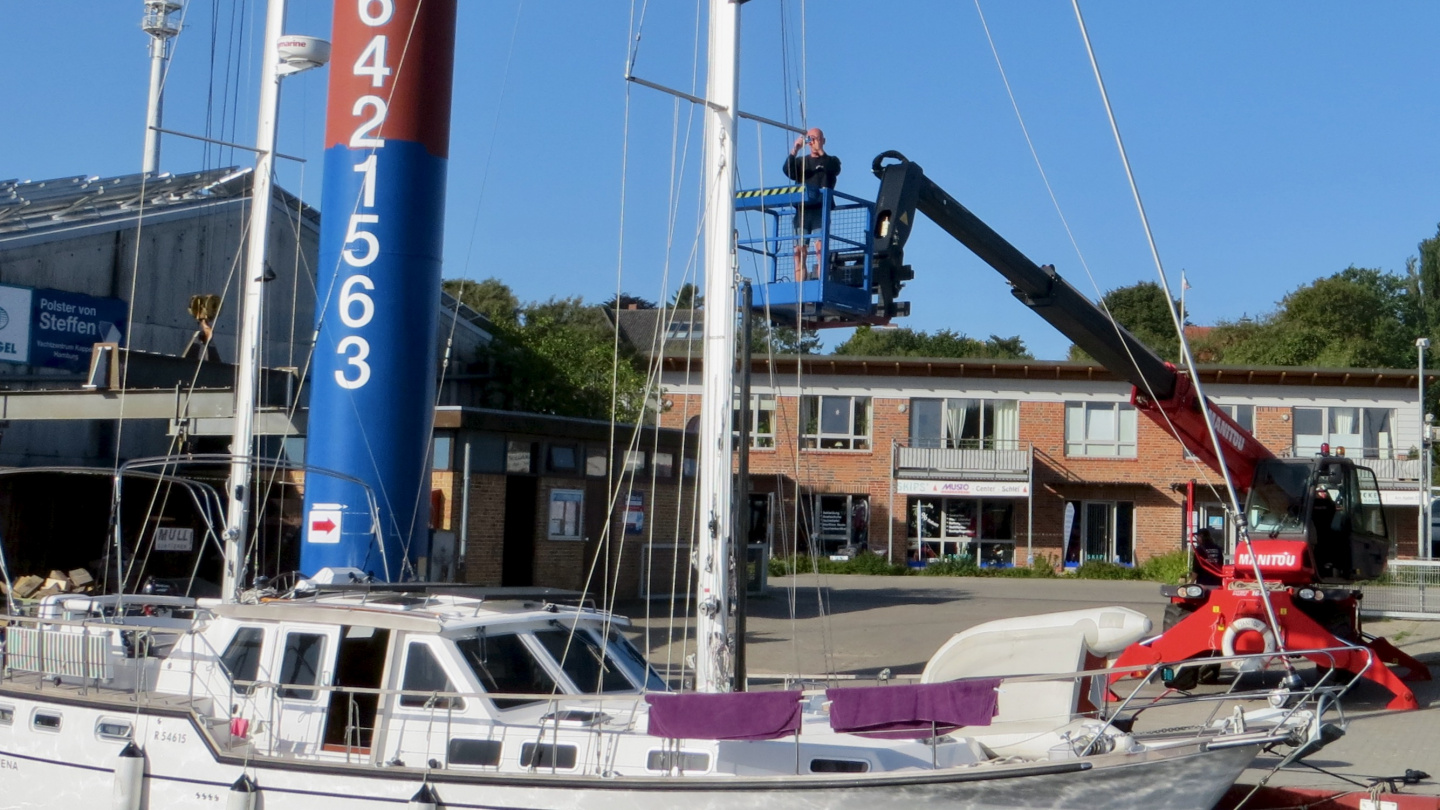
While dismantling the rig we found another surprising mistake from under our electric furling genoa foil. We have an electric furling genoa which needs to be installed with a bottom toggle withstanding a torque of an electric motor. However our rig was assembled with the toggle meant to be used with furling done by a line and this toggle is not strong enough to support the torque of the electric motor. Luckily we have always handled genoa rather gently and not pounded it with the full force of electric furler. It would have been disasterous if the toggle had snapped on the sea.
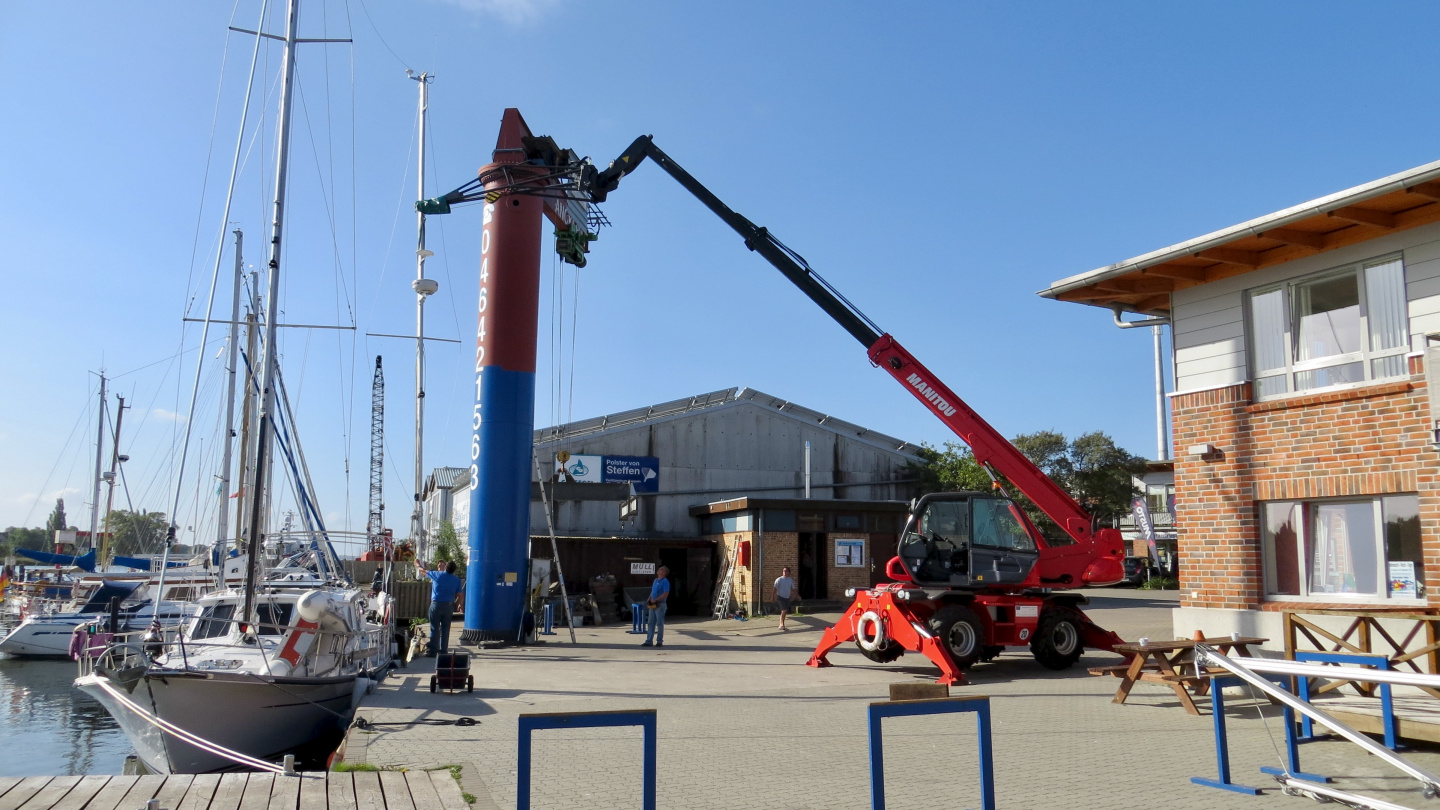
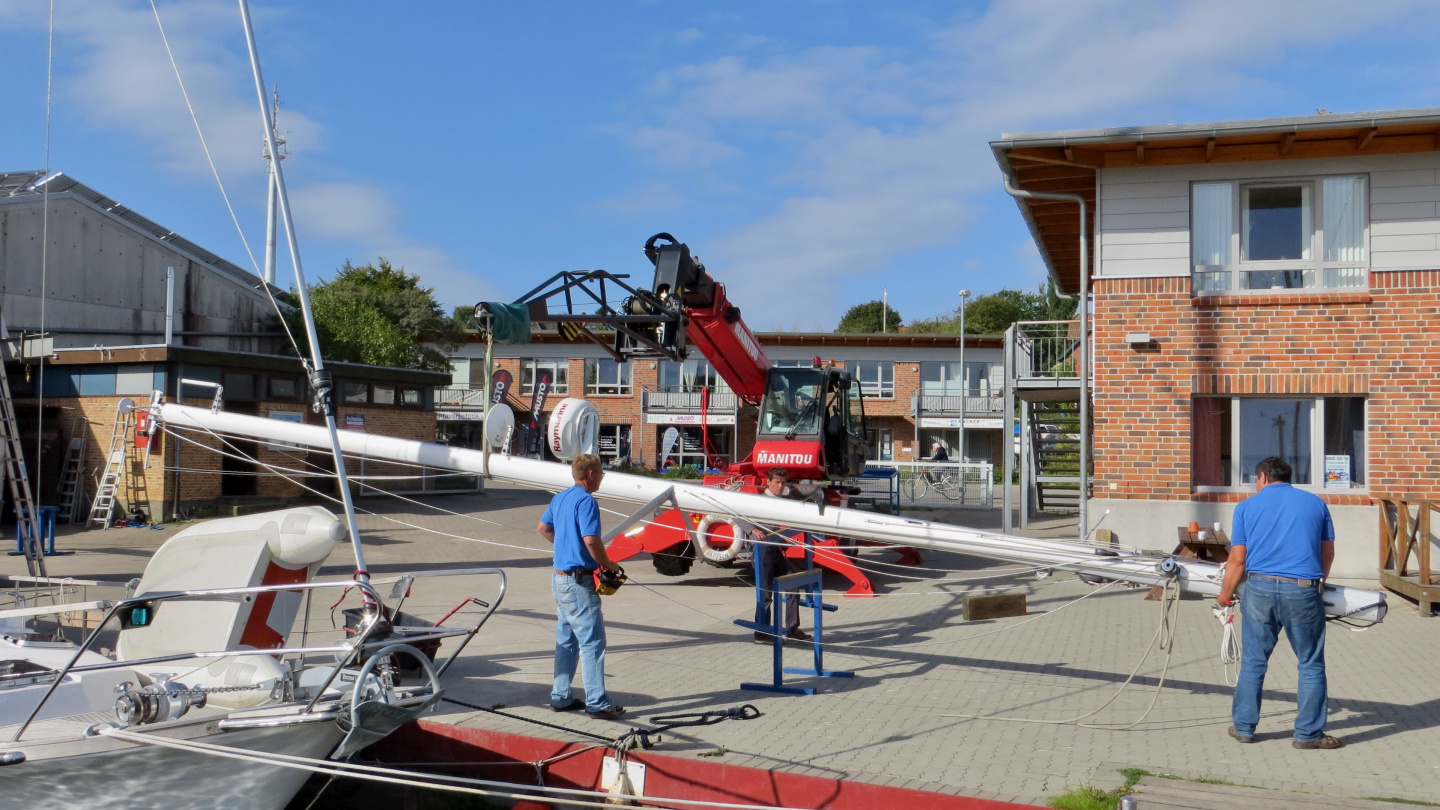
We also ordered some upgrades from Ancker. They will add a gas spring to the rod kicker that will push the boom upwards. This way there is no need to adjust the topping lift separately. We will also add a few cleats to both of the masts as it seems there are quite a few lines to store. They will also check the running rigging and all blocks. After all now we have been sailing on Suwena for two years and it is a good seamanship to check the rig before entering the treacherous North Sea.
Also the new fuel polishing system was finalized. We have four tanks and we can plan our routes rather freely and also choose refueling places. On the other hand the fuel circulates slowly and there is a possibility of having a dirt at the bottom of tanks. We wanted to add a fuel polishing system so that the fuel can be cleaned both when the engine is running and also when we are sailing in waves. The sludge at the bottom of tanks should lift up while the fuel is stirred on the sea.
Immediately after the new fuel system was tested it was time to cast off lines from Ancker marina and head towards Suwena’s winter storage in Schrader Marina at the end of Schlei.
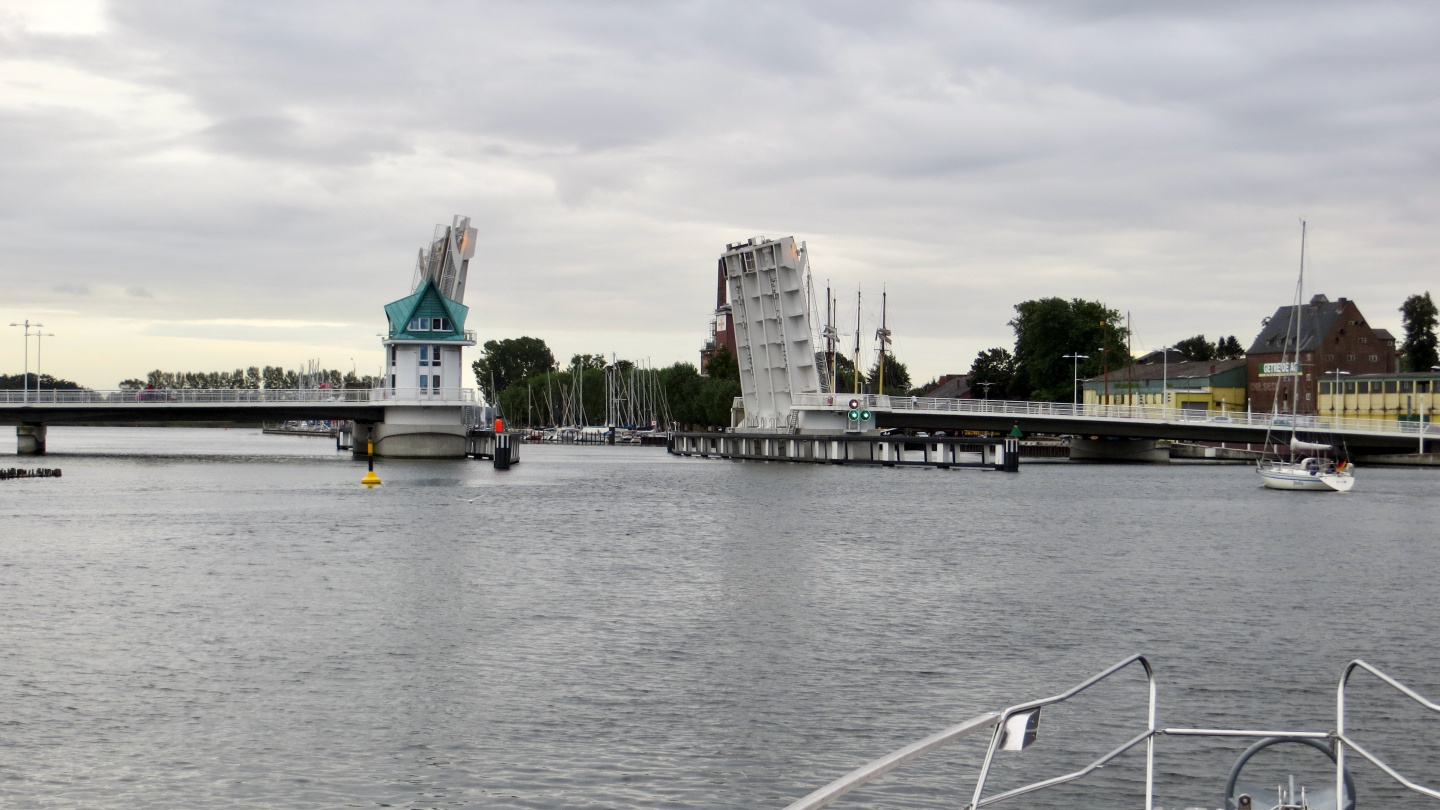
On the way to Schrader there are two bascule bridges that are opened once every hour. The distance between bridges is seven miles and we should have reached the other bridge well in time. However the sun was setting and it was already a twilight when a yacht in front of us took a shortcut to the marina and got stuck from the keel. There were two distressed-looking men aboard and we rushed to help them. Near the town of Arnis Schlei gets very shallow very quickly outside the marked fairways. Suwena’s depth sounder is near the bow and Andrus followed intensely the readings about water depth. “If there is still two meters of water under the bow, there must be enough water for the keel.” said skipper as he steered towards the yacht stuck in sand. Suwena’s draught is 1.9 metres.
The current on Schlei was about one knot and on first approach we did not get close enough. But on the second attempt we got close enough for throwing a line without getting stuck ourselves. Andrus put gear in reverse and pushed the throttle level while the other yacht used their own engine in addition. The German boat floated free from the shoal and there were two relieved men aboard their yacht on Schlei.
We continued towards Suwena’s winter home and waited for almost an hour for bridge opening. We just missed the previous opening time. The more important was however to help guys out from the shoal before the night. We ourselves had to travel in dark night for the last hour. The special thing was that we were motoring on a boat without the mast. This means our radar was resting peacefully at Ancker Yacting and Andrus navigated with only the chartplotter and flashlight. We were relieved when Suwena was finally moored without making any groundings. Fortunately all sea marks were located exactly at the places where chartplotter showed them to be and Andrus was able to confirm their position by the flashlight reflextion from buoy’s reflectors. The night was pitch black and there was no fog. We were lucky the fog arrived just on Friday morning.
On Friday the last tasks were to empty the seawater and freshwater hoses, put the antifreeze into the engine and generator and finally lift her from the water. 50 ton travel lift arrived to fetch Suwena. It only took a moment for the boat to be raised up and transported to the bottom washing station.
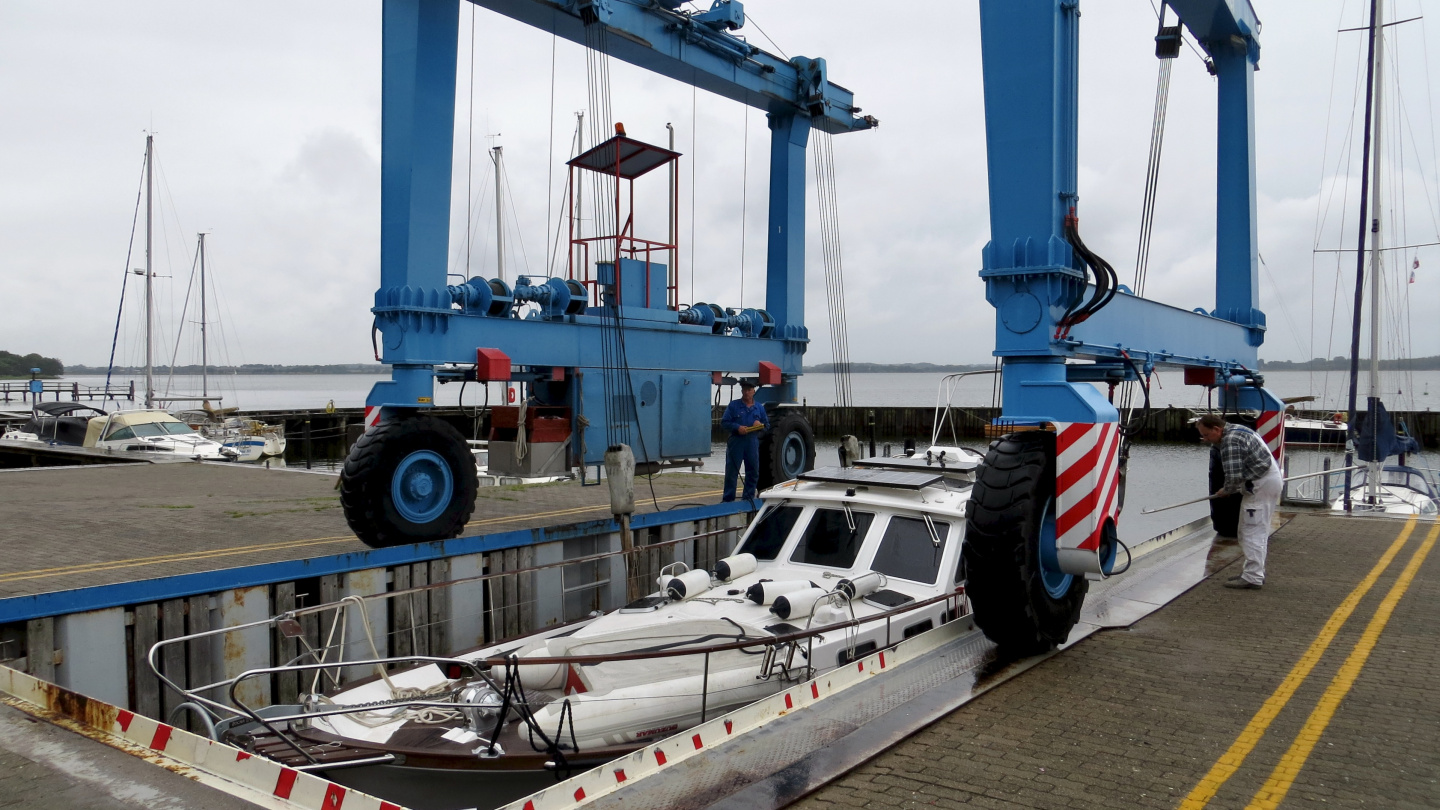
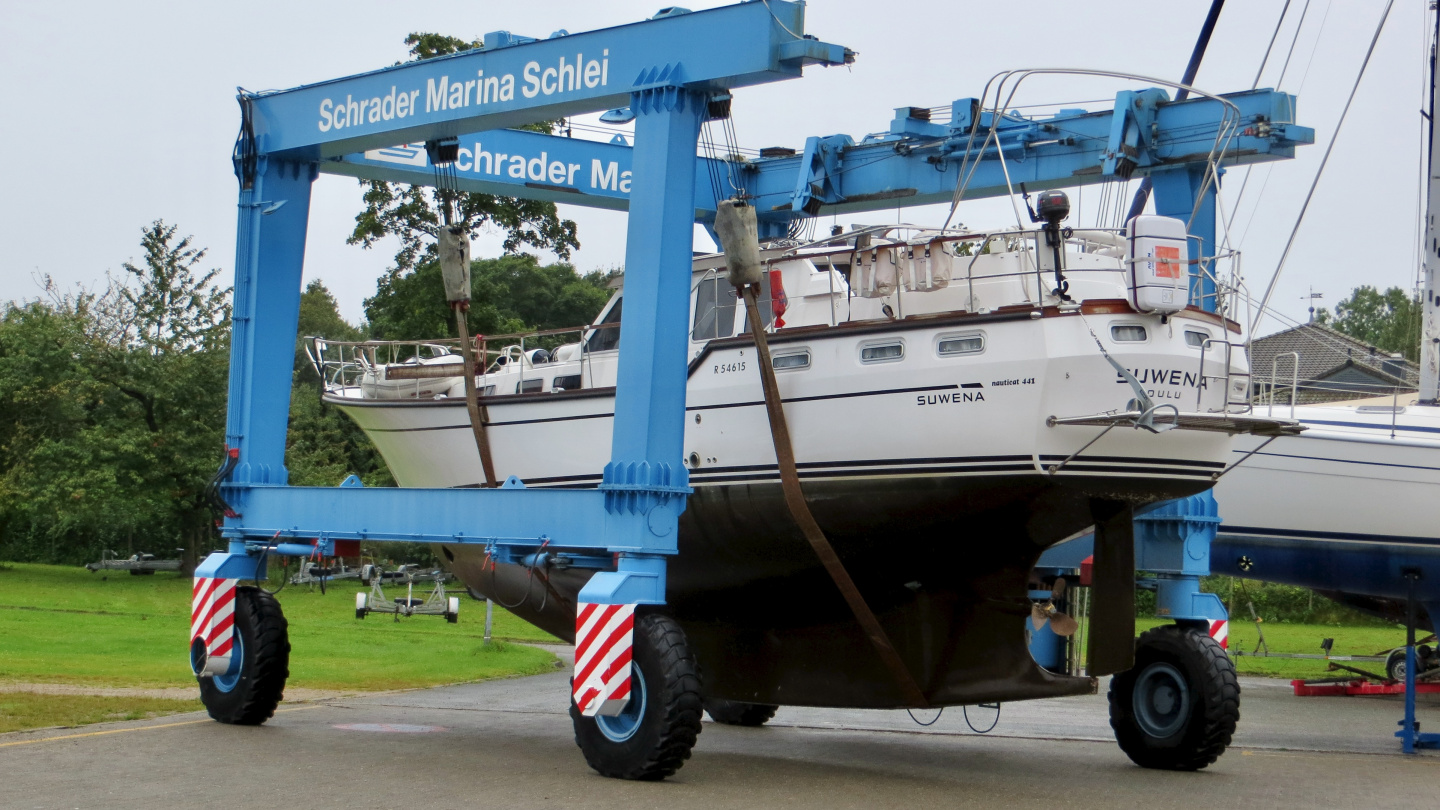
We settled the last things with Schrader marina and Suwena was ready to enter the warm hall for winter storage. We took our luggage and jumped to taxi towards the airport. Sniff, Suwena has to stay behind and wait eight months for her crew.

